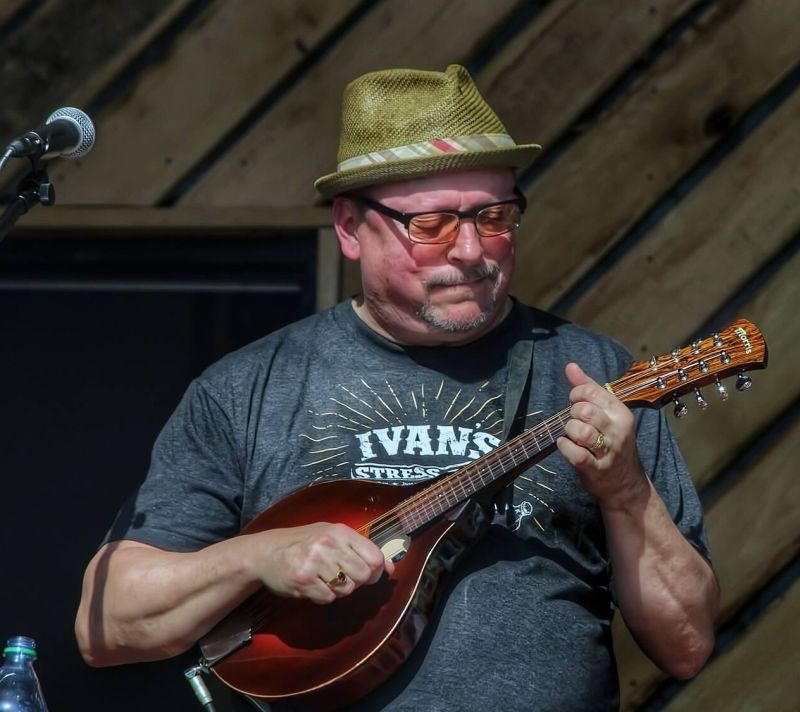 This is Howard Morris’ 332nd mandolin. He built it in his shop in Irrigon, Oregon in 2015 and it’s the cheapest one he makes, which still means it’s not really very cheap. It is, however, far cheaper than the instruments that most luthiers make, and it’s well-built and solid and fun to play.
This is Howard Morris’ 332nd mandolin. He built it in his shop in Irrigon, Oregon in 2015 and it’s the cheapest one he makes, which still means it’s not really very cheap. It is, however, far cheaper than the instruments that most luthiers make, and it’s well-built and solid and fun to play.
I’m not really a mandolin player, although I play one sometimes on stage. I’m a harmonica player, which to most people means I might as well play the penny whistle, or at least it does until they hear me play. But as my interests turned away from pure blues and more into rootsy and folky stuff, the reality is that harp doesn’t fit into all of that. I cast around for another instrument, and Lord knows the world has all the guitarists it needs, so I turned to the mando. Even a few simple chords on mandolin can help with a lot of songs.
That’s where Howard Morris’ 332nd mandolin comes in. I have a fancier mandolin, made in the 1990s by Alvarez, that looks more like the mandolins you’ve seen bluegrass players pick on stage. It sounds wonderful and looks even better, but that mandolin overpromises and my talent underdelivers, so I’m more comfortable playing this one on stage.
I’ve played Howard Morris’ 332nd mandolin enough to leave some gouges in the beautiful red cedar top, and it’s rattled around a little too much in its case and caught a few more nicks that way. That’s not entirely a bad thing. Musicians have a saying: Guitars have scars. The pretty instruments are the ones that don’t get played. The ones with nicks and gouges and worn-off paint are the ones that produce beautiful music. My mandolin has some well-earned scars, which is how it should be.
I am the second owner of Howard Morris’ 332nd mandolin. The first owner was a banjo player who bought it so he could learn another instrument. He gave up interest after a couple of months, which is too bad because it means he still plays banjo, but then he sold it to me at a discount and the mandolin looked as good as new when I got it.
Howard Morris’ 332nd mandolin is what is known among players as a “flathead.” Most mandolins are carved so the top and bottom are arched, which allegedly helps project sound, and they have F-shaped holes like a violin. This leads to a sharp, percussive, surprisingly loud “barking” tone. This one has a flat top and bottom (much easier and cheaper to make) a small body and an oval hole. It has more bass and sustain than most mandolins, but the small body means it’s not terribly loud. I amplify it anyway on stage and the acoustic volume doesn’t really matter much.
Howard Morris still makes mandolins, and he focuses on instruments that are short on bling and long on tone. I am grateful to own his 332nd mandolin. Here’s hoping he makes hundreds — even thousands — more.
